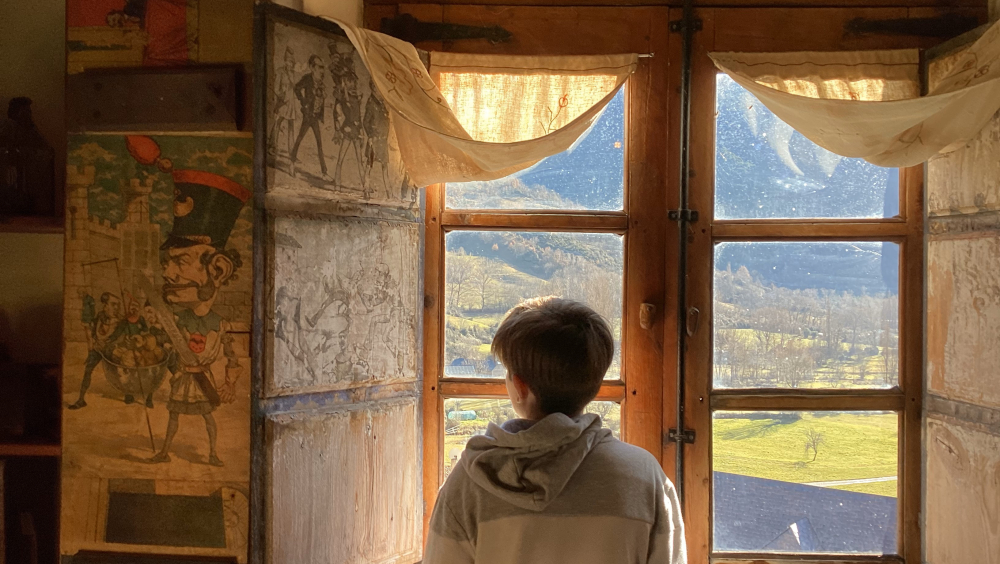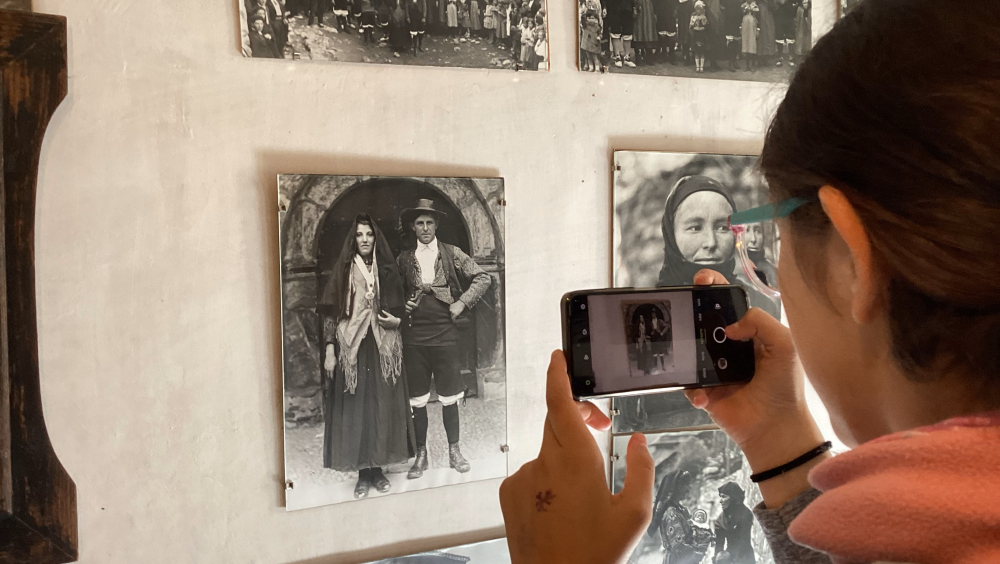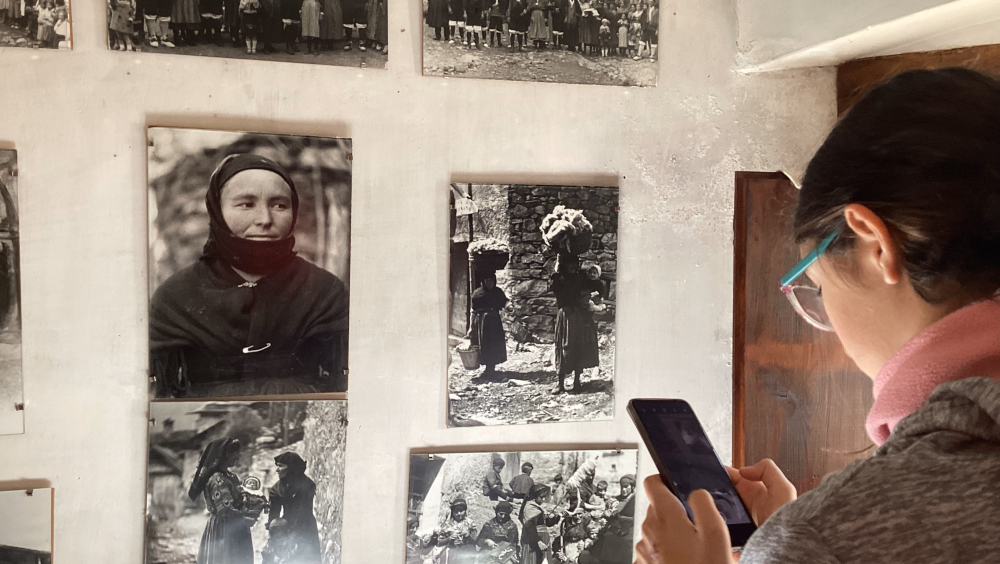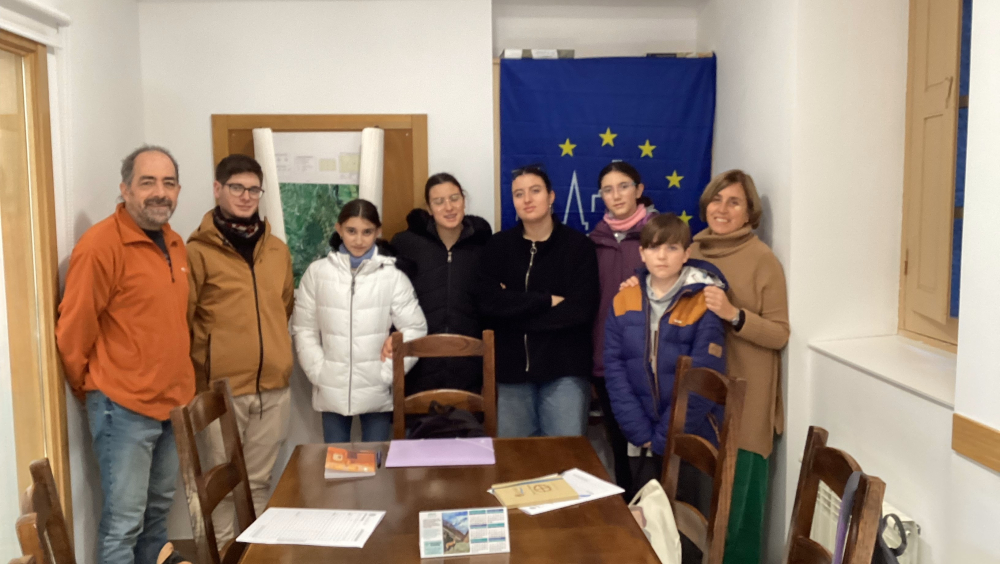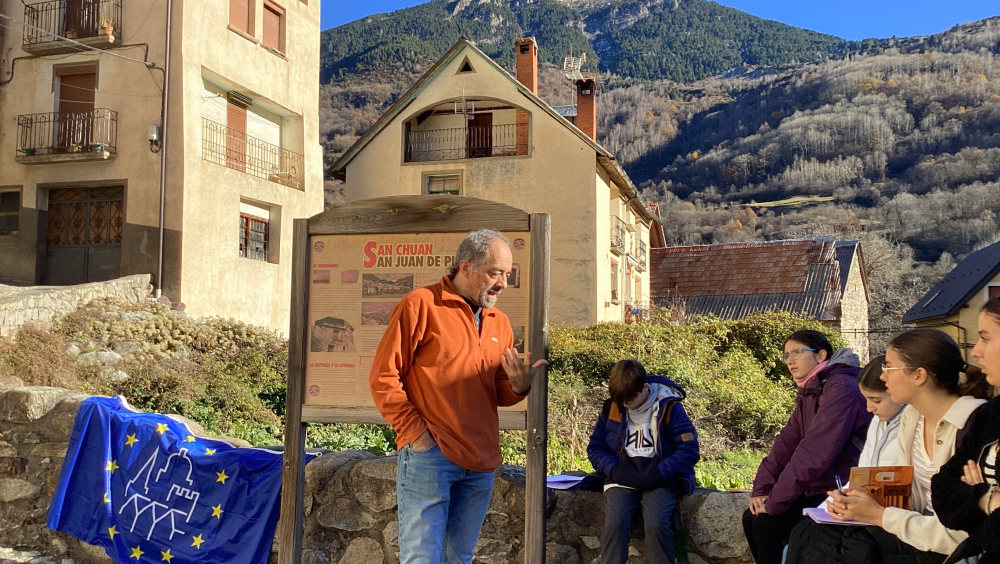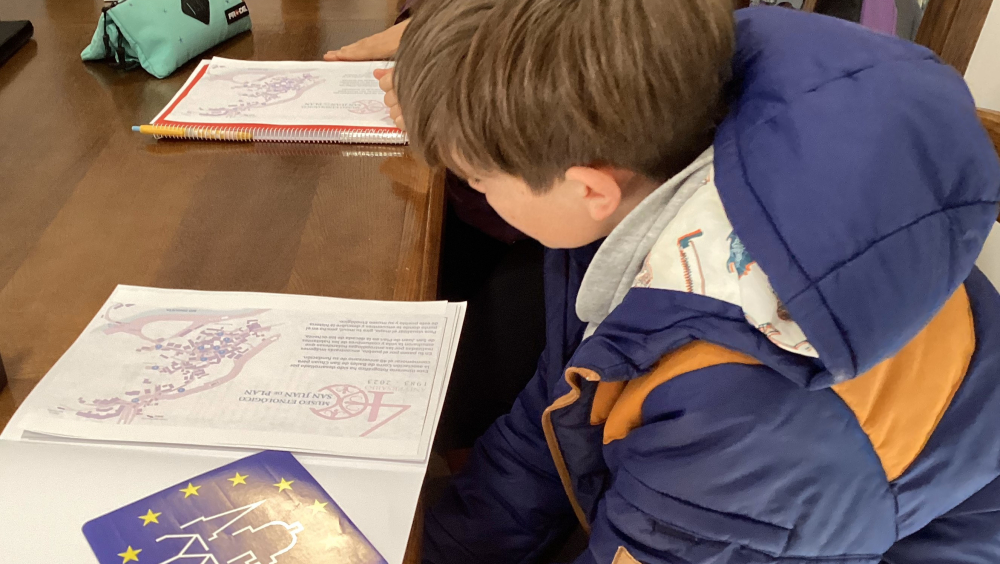Nuestra historia, tu historia
Synopsis
The story takes place in San Juan de Plan, a small town in the Sobrarbe region in the Aragonese Pyrenees. According to legend, the "faloria des cuercos" were fantastical creatures that prevented newborns, both human and animal, from growing. As a result, the townspeople had to rebuild the entire village in a different location.
In our video, we show our visit to San Juan de Plan and a voice over narrates this legend in "chistabín," a variant of the Aragonese language.
TEXT
The story takes place in San Juan de Plan, a small village in the Sobrarbe Region in the Aragonese Pyrenees. We visited this winter and explored the town, seeing photos of how life was in San Juan de Plan in the 20th century, taken by a group of anthropologists from the University of Leiden in 1983. We visited the museum created forty years ago by a group of women who wanted to preserve objects and traditions that spoke about their culture and way of life, realizing that the world was changing and it was all going to be lost. The villagers also created an association, Corro des bailes, to preserve music and dance. In the museum, we saw some of their musical instruments.
We met the mayor, who told us, in Chistabín, a variant of the Aragonese language, that the village used to be located at a higher altitude, but they had to move and relocate the village. The reason was the presence of fantastic creatures that didn't allow newborns, humans or animals, to grow. They had to rebuild the entire village in a new location, and finally the fantastic creatures left them in peace. These fantastic creatures were called lacuercos, a type of furry serpent, sometimes with horns.
We found this story fascinating and wanted to share it. In our video, we have included footage from our visit to San Juan de Plan and a voice-over narrating in Chistabín the tale of the cuercos.
La historia transcurre en San Juan de Plan, un pequeño pueblo de la Comarca de Sobrarbe en el Pirineo aragonés.
Fuimos este invierno, de visita. Recorrimos el pueblo y vimos las fotos sobre cómo se vivía en San Juan de Plan en el siglo XX que un grupo de antropólogas de la Universidad de Leiden hicieron en el año 1983. Visitamos el museo creado hace cuarenta años por un grupo de mujeres que querían conservar los objetos y las tradiciones que hablaban sobre su cultura y sus modos de vida porque se dieron cuenta de que el mundo estaba cambiando y todo aquello se iba a perder. También los vecinos de este pueblo crearon una asociación, Corro des bailes, para conservar la música y la danza. En el museo vimos algunos de sus instrumentos musicales.
Conocimos al alcalde, que nos contó, en chistabín, una variante de la lengua aragonesa, que el pueblo, antiguamente, estaba situado en otro lugar, a más altura, pero tuvieron que mudarse y trasladar el pueblo de sitio. La razón fue la existencia de unas criaturas fantásticas que no dejaban crecer a los recién nacidos, ni humanos ni animales. Así que tuvieron que volver a construir todo el pueblo en otro lugar y, por fin, las criaturas fantásticas les dejaron en paz. Estas criaturas fantásticas se llamaban lacuercos y era una especie de culebra peluda, a veces con cuernos. A nosotros esta historia nos pareció alucinante y por eso queríamos darla a conocer.
En nuestro vídeo hemos recogido imágenes de nuestra visita a San Juan de Plan y hemos incluido una voz en off, la del alcalde, narrando en chistabín la faloria des cuercos.
